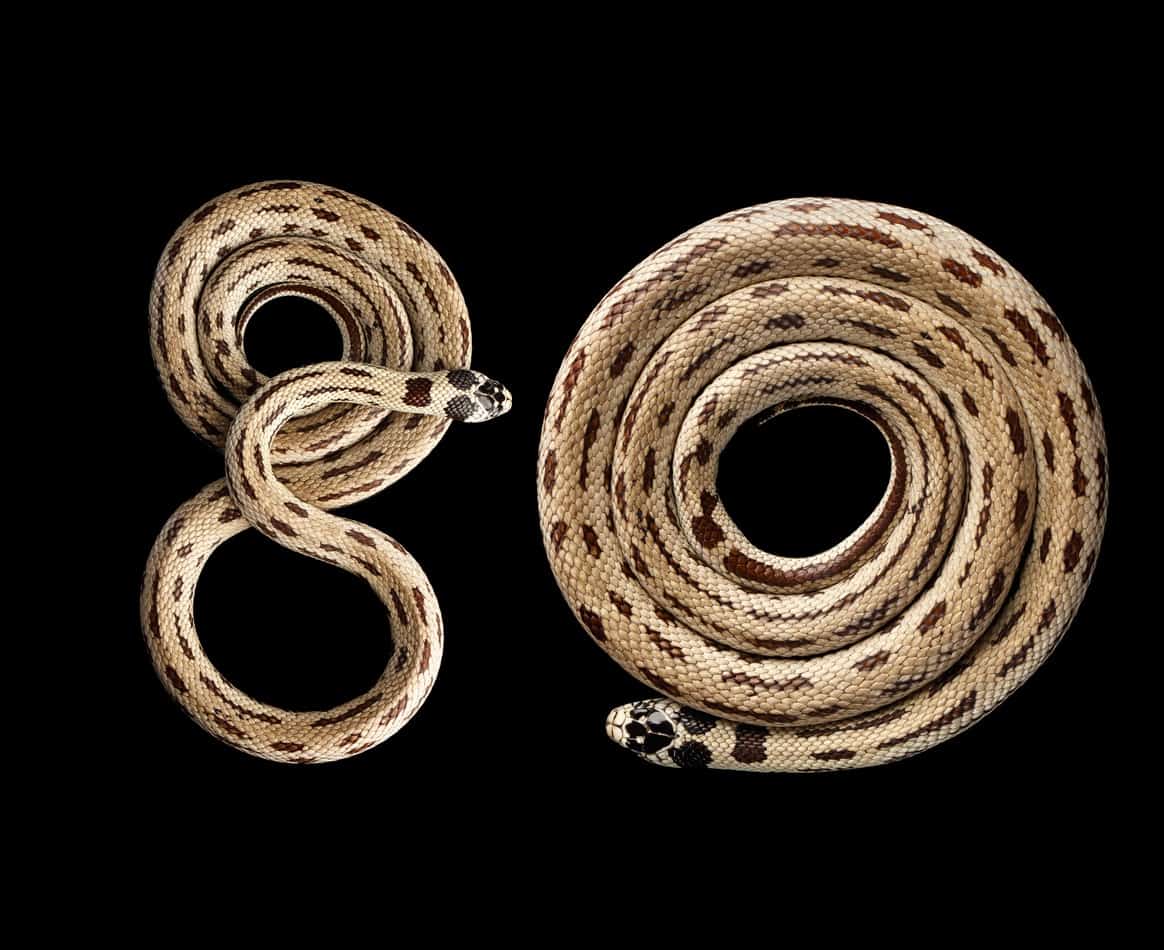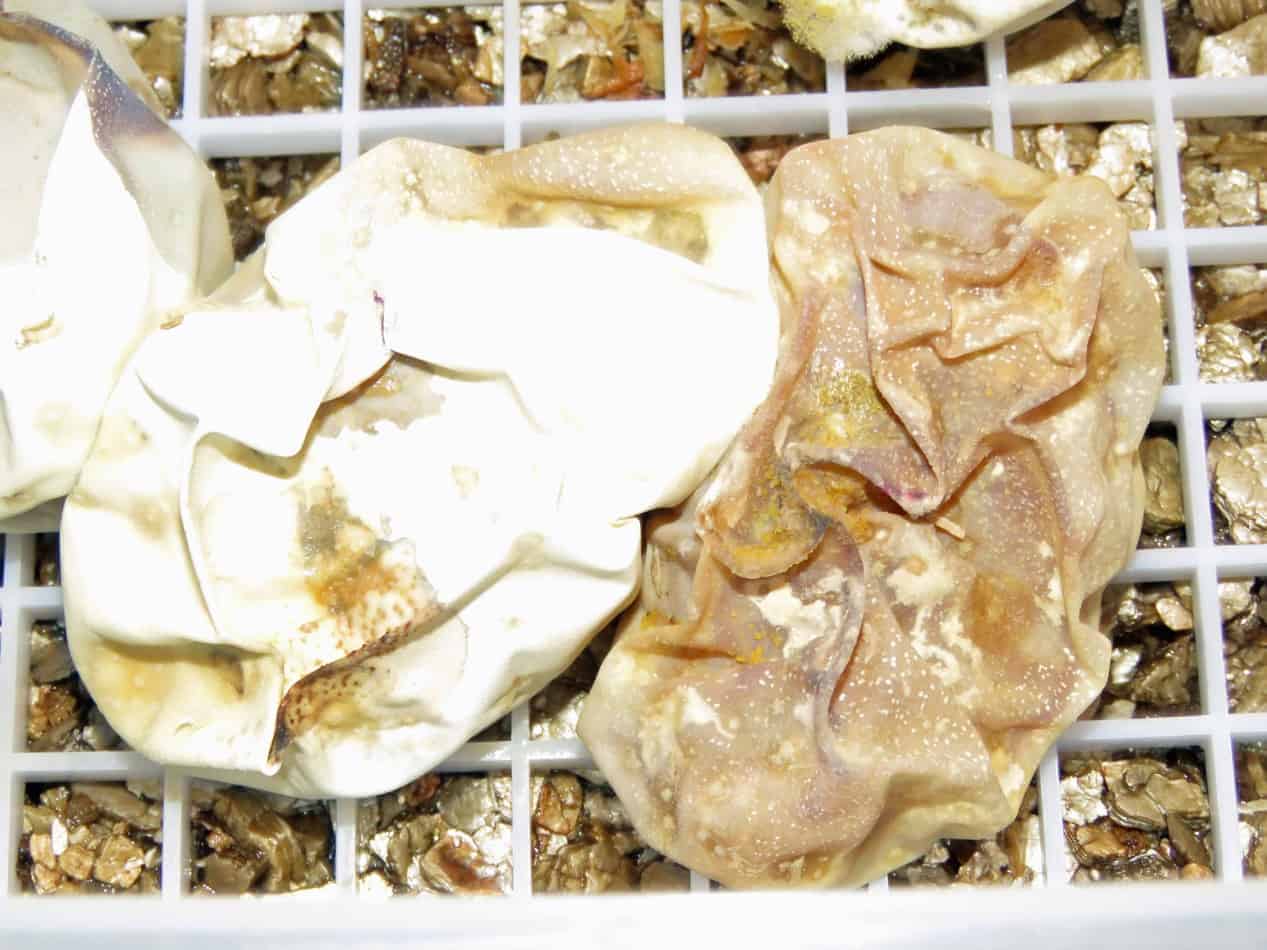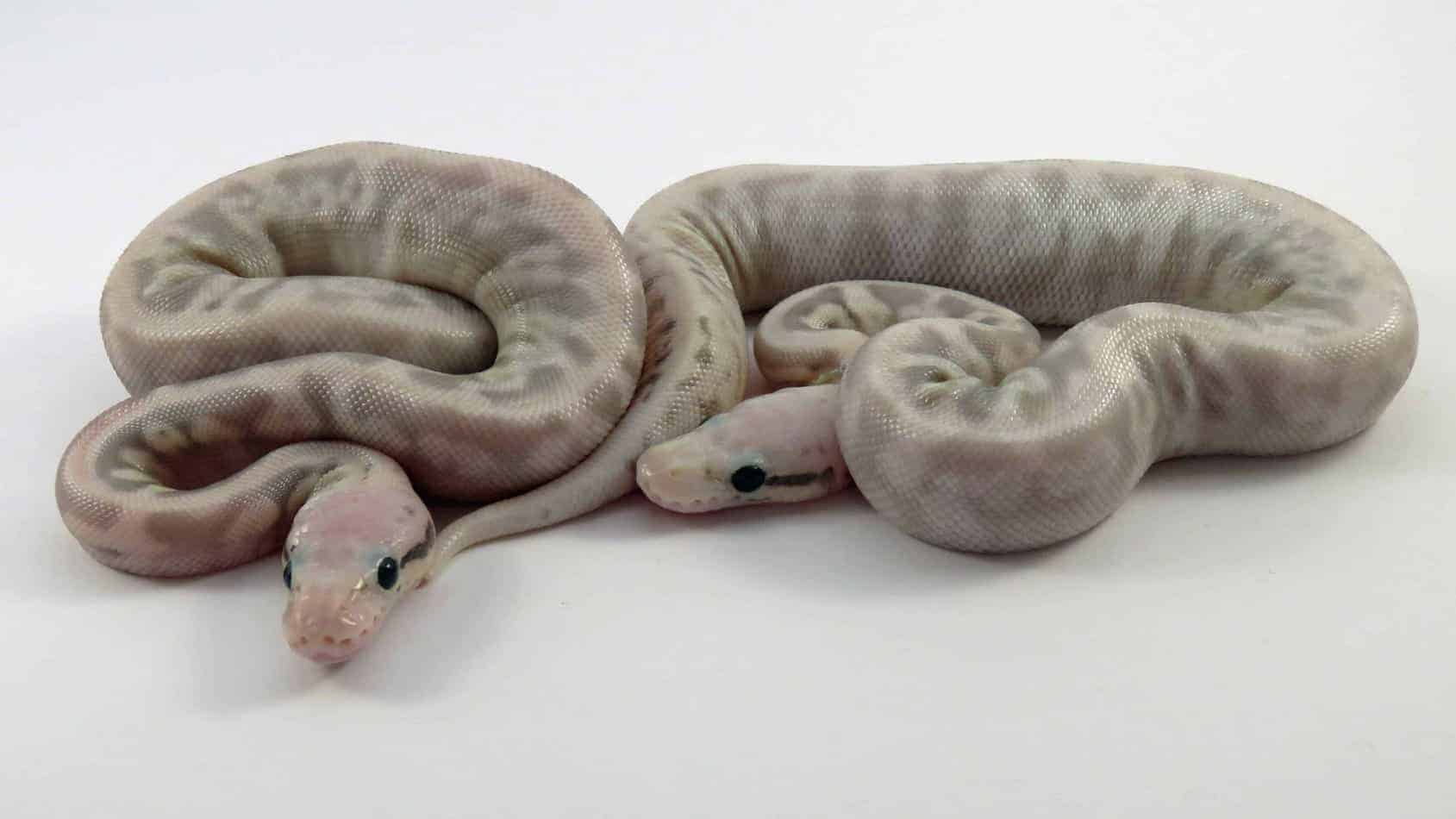How to Breed a Snake (Complete Guide With Pictures)
Have you ever wanted to breed a snake? Snakes are adorable and little baby snakes are the bomb, but breeding can be a daunting prospect. Here is the complete guide on how to breed a snake.
How Do You Breed A Snake?
Breeding a snake usually takes about a full year depending on the species. After bringing your snakes out of brumation, stimulate the male to prepare for mating. After that, introduce the male and let nature do its work.
Breeding any type of snake can be a complex process, but always a rewarding one. In this guide, we will walk you through some of the hazards and common pitfalls of snake breeding.
Why Breed Snakes?
Before we even begin breeding, there are a few questions that you need to answer for yourself. Let’s examine those together.
Why are you wanting to breed snakes? Snake breeding can be an enjoyable hobby to some, and a way to make a living for others. I will be honest right up front, if you are looking for a way to make money, breeding snakes is a difficult route to choose.
While it is true that some do make a profit breeding and selling snakes, I have never known anyone who has become rich in this business. Some snakes sell better than others. Ball pythons, for example, can sell anywhere from $50 to $2500 dollars depending on the morph, while breeding corn snakes will almost always inevitably end in the red.
I haven’t even begun to mention the amount of capital needed to buy all the materials required in order to begin breeding for profit. No, it is not an easy way to go. My guide will be geared more toward the casual breeder and snake enthusiast.
The next thing you need to consider before you breed is what to do with the baby snakes when they are born. Remember that snakes can usually lay anywhere from 40 to 80 eggs at a time, depending on the species of snake. That is a lot of newborns to look after.
Have you considered the cost of feeding these hungry mouths for even a couple of months? Baby snakes are voracious eaters and usually, need a couple of rats a week to grow. If each rat costs $.50 a pop and you need to buy 160 rats a week to feed your 80 snakes, that can easily be $64 for just one week!
On top of that, you will need to buy extra cages and fill them with proper humidity, lighting, and amenities. You will also need an incubator for the eggs. You will also have to locate a snake of the opposite sex to begin breeding… and the list goes on. Point being
One final thing to consider before we begin breeding is the toll that it may take on the health of your pet snake. If you own a female, for example, the laying process can seriously affect her weight and appetite thus, leaving her more prone to disease.
If your snake is not in the very best condition, breeding may not be an option. IF you aren’t sure, don’t be afraid to consult a professional.
My goal is not to scare you out of this, but to make you aware of all the possible hazards of breeding. It can be taxing on your time, your wallet, and the health of the snake. Make sure you know what you are getting into before you bite off more than you can chew.
Now that you know some of the risks, let’s jump right into breeding
Choosing Your Candidates

At the beginning of every job, a stone cutter makes sure that he has the very best tools to work with. A chisel freshly sharpened and his hammer free of any dents or divots. He knows that any defect in his tools may hamper the quality of his work. The same care must be applied to snake breeding as well.
Unlike the stone cutter, we are working with living creatures, and their lives may be at stake if they are not up to the job. The ideal candidates for breeding need to be absolutely free from disease or injury if they are to be chosen.
Determining whether or not a snake is healthy can be difficult for amateurs. They give little, if any, sign that they are unwell. If you are unsure of the health of your snake, take him to a licensed veterinarian before continuing.
Snakes also need to be a mature health and weight before they begin mating. Most female species of snake will reach full sexual maturity around three years old, while most species of males may begin after only one year. It is critical that your snakes are of healthy weight before you begin. Proper weight will vary from species to species.
After you have selected the best candidates for mating, you will need to assure that the snake is properly sexed before continuing. That is, make sure that you have a boy snake and a girl snake, or you probably will not be seeing many snake eggs.
Methods of sexing differ from species to species. There are plenty of video guides online to help you. If you do not feel comfortable sexing your snake, as it is a delicate process that could harm your snake if done incorrectly, trust a professional to help you.
The Seasonal Shift
Not that you have chosen your healthy snakes, and have made sure that their, well… compatible, you are ready to prep your snakes for breeding.
In order to induce breeding, most species of snake need to go through a period of brumation. Brumation is an artificial winter. In the wild, snakes typically breed in the spring, but only after a few months of cold.
During brumation, snakes develop the strength needed to help them through the laborious process of birth. To help them, we simulate colder temperatures in our snake’s enclosure.
A snakes tank is usually kept anywhere from 85 to 90 degrees. Light is shone on the cage for at least twelve hours a day. During brumation, however, temperatures will be lowered to 78 to 80 degrees (depending on the species) and light shone on the cage for about 8 hours a day.
The lower temperatures will cause your snake to slow down. You may notice that his appetite has been severely curbed. You will still need to feed him about once every two weeks. Don’t neglect the humidity in the tank either.
It is common for snakes to curl up inside their water bowls during the cold. He is not taking a refreshing swim, he is too dry. Although he may look cute in there, it is far too cold to let him stay in.
Keep temperatures cool for one to three months. A lot will depend on what species of snake that you are breeding, but most agree that a longer brumation is good for the health of your snake.
Don’t be afraid to let him chill for a few weeks longer. He will be needing the extra rest for what is about to come.
Do not feel obligated to gradually raise temperatures after brumation. It is preferable to turn on the heat all at once. By slowly warming the air, you could awake bacteria within the cage that could attack your snake when his immune system is still not at its highest. Better safe than sorry. Turn on the heat all at once.
Once out of brumation, most species of snake will have a renewed appetite. Don’t be afraid to double their normal feeding. The extra calories will help them in breeding. Some snakes will shed about a week after brumating.
Preparing the Male for Introduction
I think that its universal, even across species lines. Guys just suck at romance. Your snake, just like your awkward roommate, will need a little help before he begins courting.
Prepping a male for courtship differs wildly depending on the species. A corn snake, for example, is ready to go. Hook him up with any pretty young snake, and they will be doing the dance of love in minutes.
Ball pythons, on the other hand, need a little extra help. You will need to put a male in a cage full of other males before he is ready to get it on. Maybe he just needs a pep talk from his bros or something. Anyway, there are a few tips that will help any species of snake you may be breeding.
- Ensure that your males are properly fed. Remember, snakes lose a lot of calories during brumation, and some males won’t even feed if they are cold. While that is normal and healthy, they will need to gain some energy before they mate. As I said before, double the caloric intake of your males and they should be good to go.
- Give your males some rest. Mating is hard. It takes a lot of energy out of your male. If you are planning on using the same male for mating purposes after he has already been with a female, try giving him a week or so to rest. He will need to build up his strength again for another try.
- The last tip I would give is to find out the specific needs of your snake’s species. Every snake is different and needs different preparation. Give your snake the treatment that is best for him.
Now that the male has been prepped, and the female is ready after brumation, let’s see how your snakes will interact once they are introduced.
Introducing the Male
Love is in the air and your snakes are getting antsy. Like any young couple sitting through there own wedding reception, they just can’t wait any longer. Let’s help these young hopefuls out and start pairing them together.
The first introduction of a male is a straight forward process. After properly prepping him according to the individual needs of his species, bring him to the female enclosure (Now, it doesn’t really seem to matter if you place the male in the female’s tank, or the female in the male’s tank, this is just the way that I have researched).
After placing the male, he will quickly become aware of any female snake in his new surroundings. Snakes will usually get jiggy with it right away, but there may be some fighting before then. If they hiss and coil a little, don’t be afraid. Actual injuries are rare. Your male will cautiously slither up to the female, and intertwine with her to begin breeding.
At this point, give the kids a little privacy. Some species of snake will straightforward in an hour or so, but others may stay intertwined for as long as four days. If you startle the young couple before they are finished they may disconnect prematurely.
Avoid making any loud noises while your snakes are breeding, and don’t be a weirdo and go poking them or anything like that. Just leave them be until the deed is done.
After your snakes are done mating, they will disconnect from each other. Return the male to his own cage, and give both snakes a little time to rest before being reintroduced.
Now we will discuss how to tell if the female snake is gravid.
Life Changing News
Any young man will jump to his feet upon hearing those famed words, “I think I’m pregnant.” Whether your jumping for joy, or to run away depends on your specific circumstances, but that’s your own business.
Determining whether your snake is pregnant, or gravid as we snake in the snake business, can be tricky. Let’s look at a few
- Look for a bulbous midsection. Yup, even snakes can get a baby bump. This is usually the most common way to judge whether a snake is carrying eggs or not. The section of the snake just before the tell will become swollen. The scales on her belly will flare slightly outward to accommodate the bulge, and you may even be able to see the slight outline of through her skin, depending on the color and species of the snake. This can be tricky to spot, but is a good sign that the little munchkins are on their way.
- Some species of snake will change color when they become gravid. Look for small changes in the colors of your snake’s scales. There may be a stronger contrast between darker and lighter colors, and some snakes may change colors all together. Some acquire a darker hue to their scales. While these can be a promising sign, none are conclusive.
- Look for any abnormal behavior in the mamma snake. When a snake becomes gravid, she will often readjust herself as if she is looking for a more comfortable position. As the time approaches for her to lay eggs, she will appear to pace the cage. She is looking for the best place to lay them. Pythons will even lie on their back when gravid. Each species of snake has its own set of quirks. Find out the unique behaviors of your snake, and watch closely.
- Most species of snake will shed about a week after becoming gravid. This is a great sign that she is gravid. Most will also refuse food, but that depends on the species of snake.
After you have determined that your snake is gravid, stop introducing the male and get ready for some eggs.
Getting Ready for the Eggs
Just like you would want to treat a pregnant woman with respect, so should you treat a gravid snake, lest you incur their wrath. Making sure that mommy snake has a good place to lay her eggs is essential to ensuring a healthy laying process.
Choose a location that is warm and damp. If it is too dry or to wet, it may damage the eggs. I have seen a lot of people cut a hole in the side of a shoe box and use that has a nest. Others cut a hole in the side of a gallon ice cream container.
The point is to have a place that the snake can enter easily, while you still have ease of access as well. Hence the lid on both these items mentioned. Fill whatever you use with damp betting and wait for your snake to enter.
It is a good idea to place a bowl of water next to the entrance of your home in case mommy snake needs a drink before she lays her eggs. You may also want to try feeding her one last time before she lays.
Now that you have a place ready for your snake to lay its eggs, let’s look at how to remove the eggs and place them in an incubator.
Removing and Caring For the Eggs
No mom ever wants to part with their baby. And you do not mess with a new mamma. Unfortunately, we are going to have to do both right here.
When the mother snake is finished laying her eggs she will coil around them for protection. Remove the lid of whatever container you decided to place her in. Enjoy the miracle of life. Wow, so miraculous. Now, get ready to destroy the tranquil scene of tender love before you.
Be careful when removing the mom. In order to do so, you need to purposefully unwind the snake from around her eggs and place her in a separate tank. The best way to do this is not to hesitate.
As you put your hand in the snake’s space, she is sure to protests. She will likely hiss and may even assume a striking position. Do not be alarmed, this is normal and the chances of being bitten are low. Grab the snake right behind her head and move her out.
Now that the mom is in a separate tank, you will need to move the eggs into their incubator. I have heard a lot about what substrate you should use in an incubator, but it doesn’t seem to matter much. Fill it with whatever you use in your snake’s enclosure.
Be gentle when removing the eggs and take careful note as to which side of the egg is “facing up”. If you were to flip an egg during transportation, it would cause problems to the development of the snake.
Some breeders like to mark the up-facing side of the egg lightly with a marker so they don’t get confused. Place them gently within the incubator.
While transporting the eggs, you may notice that some are stuck together as if glued. Do not attempt to detach these as you are sure to rip the eggs and kill the developing snake.
Once in the incubator, monitor the eggs carefully. A healthy snake egg will be white and have an almost leathery texture. Unfertilized eggs will appear smaller than the healthier eggs and will have a yellowish quality. Feel free to toss these.
Ensure that they have proper heating and humidity. If the air is to dry. The eggs will become chalky and flaky. Mist the air and remove the chalky dead eggs. If an egg dies in the incubator, it will become brownish and will start to sprout mold.

It is a good idea to remove these, as the mold may spread to the other eggs. If you are unable to do so without damaging the other eggs, you can leave it in. At the very least, try separating it from the others.
Snake eggs take anywhere from 58 to 62 days to hatch.
Now that we have discussed how to care for the snake eggs, let’s learn what to do when the little guys are ready to hatch.
Hatching the Eggs
When a snake is hatching from his egg, do not give him any help. These little guys are pretty weak when they are born, and need to learn how to get out of their eggs themselves. Any help that you give them could severely damage their development.
Once all the eggs are hatched, remove the babies from the incubator and set them in a separate enclosure. Most baby snakes will begin to feed about a week after hatching.
Snake Babies

Boas actually do not lay eggs but give live birth to live young. A boa usually has 16 babies every litter on average, but some may produce more than 50 offspring at a time. After baby boa constrictors are born, remove them to a separate tank.
They will usually all ball together in a big snaky mass. Give them fresh water and ensure that the air is humid. After about a week they will begin shedding. Move them to separate containers that contain bedding and fresh water. When the snakes are about two
Additional Questions
What is the hardest snake to breed?
Most snakes aren’t very difficult to breed per say, just different. Boas, for example, give live birth, which provides unique challenges, as opposed to egg laying species of snakes.
Ball pythons have a reputation as tricky breeders as the male is difficult to stimulate. Egg laying snakes may be more difficult to breed, because of the incubation process.
Where can I sell the snakes that I breed?
Selling snakes can be difficult to do. Some states require a special license for the breeding and selling of snakes, while others do not.
Big chain pet stores are not likely to buy any snakes that you offer to sell, but some local ma and pa type store will. If you are looking to sell, your best bet to do so is online, but be aware. Most shipping companies like FedEx require a license before you are allowed to ship reptiles.
Can I make money selling snakes?
Probably not enough to live on. In the article we discussed some of the challenges in selling snakes, but it can be done. Just be ready to sink a lot of money into it in the beginning before you sell.
When is a snake’s breeding season?
In the wild, a snake will usually breed in the springtime. Because of this, most snake breeders like to start breeding in the spring as well, but it doesn’t necessarily have to be done that way.
After cooling your tank down to the appropriate temperatures, your snake will brumate. After a few months of cold, your snake will be prepped for breeding. You can begin to brumate your snake at any time of the year.
A lot of mass breeders, those who breed a lot of snakes, will usually be breeding their snakes year round. Those with smaller operations tend to start at the beginning of the year, and finish at the end like snakes do in nature.
